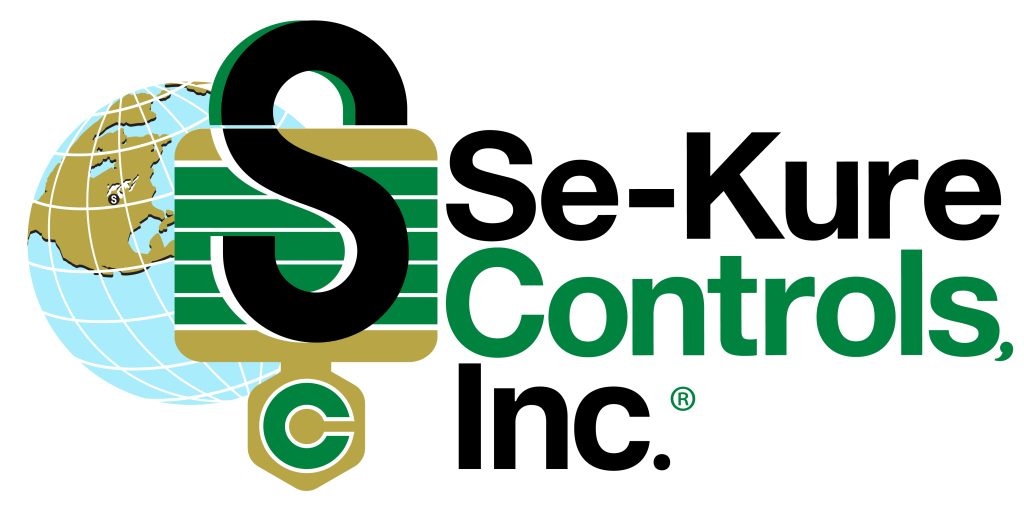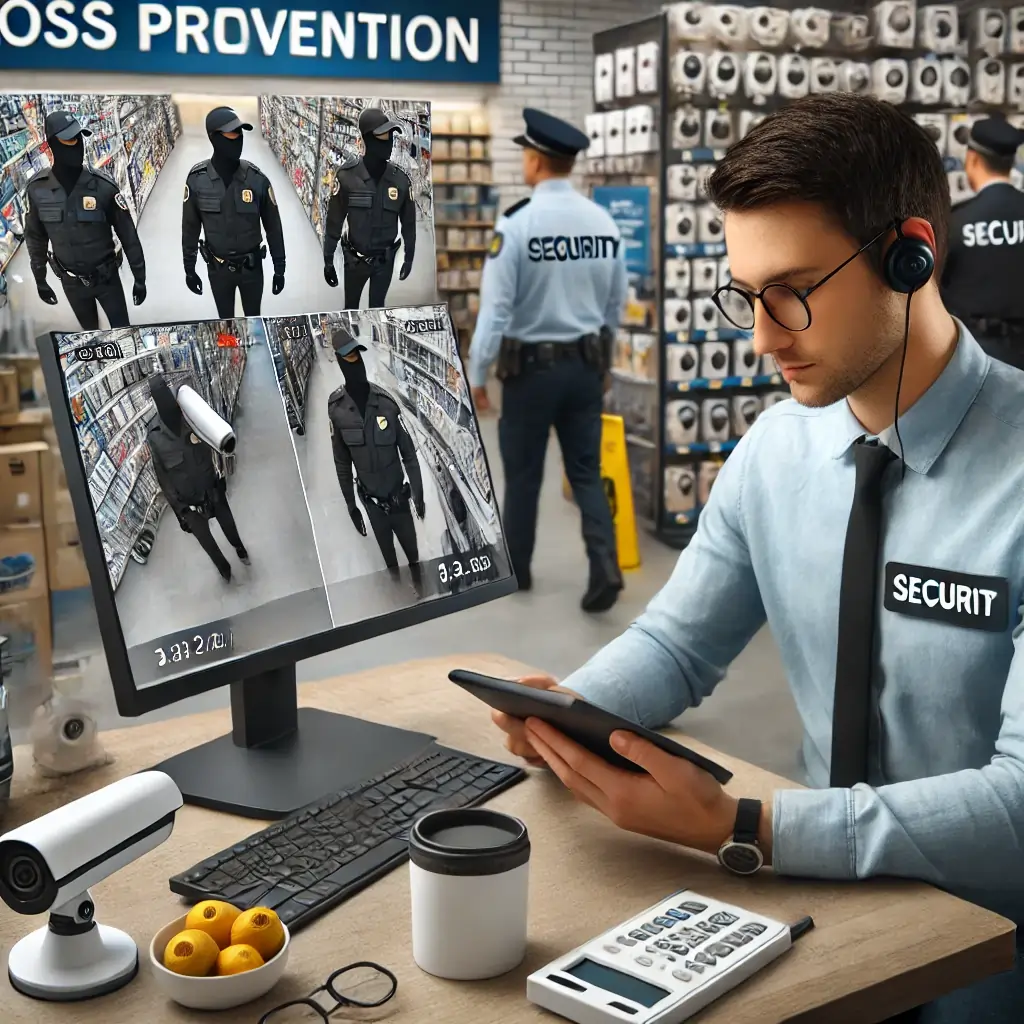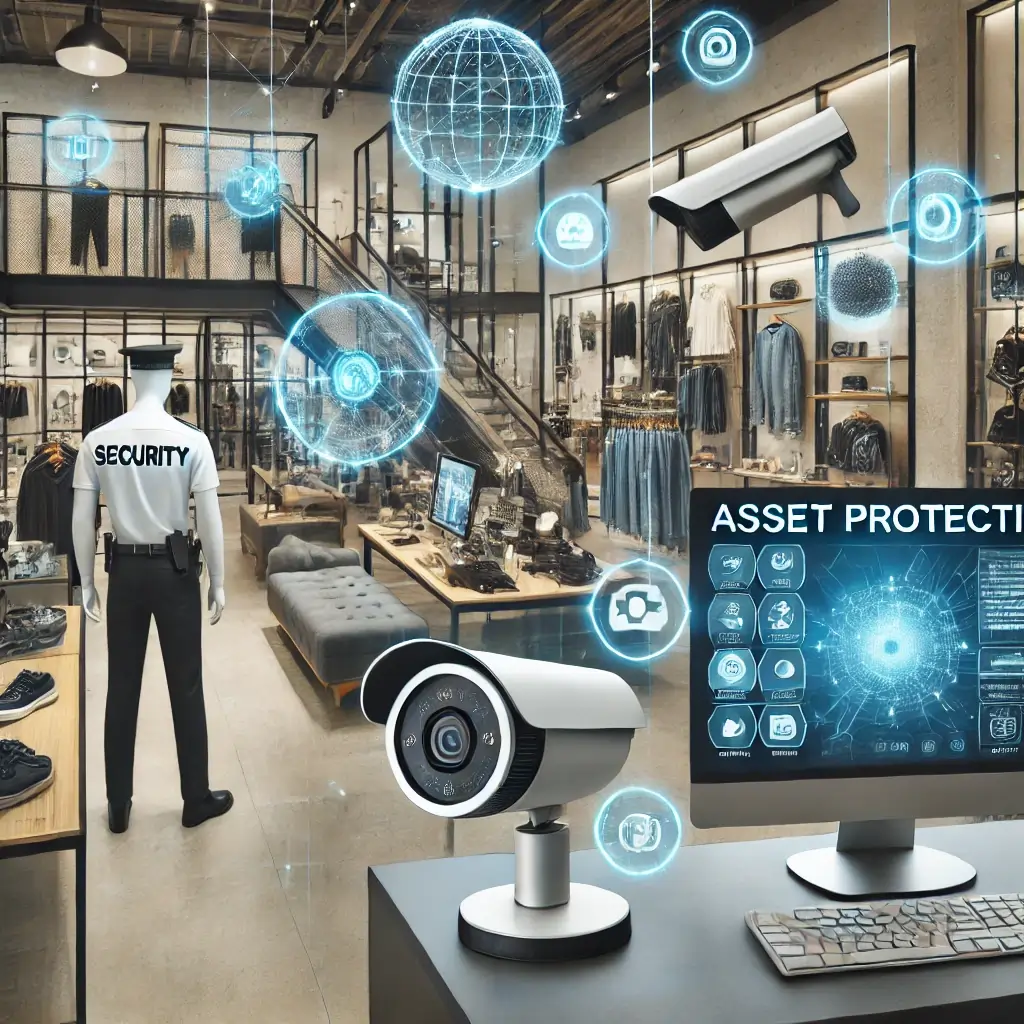Introduction
Shoplifting poses a significant challenge for retailers of all sizes, from small local stores to large department chains. Theft-related incidents not only lead to financial losses but also impact employee morale, operational efficiency, and customer trust. According to the National Association for Shoplifting Prevention, businesses in the United States lose an estimated $50 billion annually due to shoplifting and theft-related crimes. This staggering figure underscores the urgent need for retailers to take proactive measures in mitigating theft and safeguarding their merchandise.
Shoplifting can take many forms, from individual opportunistic theft to organized retail crime (ORC), where professional groups systematically steal merchandise for resale. These incidents can happen quickly and often go unnoticed, making it essential for retailers to adopt a multifaceted approach to theft prevention. While no single strategy can completely eliminate shoplifting, a combination of security measures can significantly reduce risks and losses.
One of the most effective ways to deter theft is through store layout optimization. A well-designed store can help minimize blind spots, improve visibility, and create an environment where suspicious activities are easily detected. Strategic product placement, clear sightlines, and secure storage for high-value items can make shoplifting more difficult and less appealing to potential thieves. Additionally, maintaining a clean and organized store discourages criminals by signaling strong operational control.
Advancements in security technology have revolutionized the retail industry’s ability to combat shoplifting. Modern surveillance systems equipped with high-resolution cameras, real-time monitoring, and AI-driven analytics can identify suspicious behavior and provide valuable evidence in the event of theft. Electronic Article Surveillance (EAS) tags, RFID tracking, and smart checkout systems further enhance security by preventing unauthorized removal of merchandise. Retailers can also integrate facial recognition and biometric access control to identify repeat offenders and track suspicious activities more effectively.
Another critical element in reducing shoplifting is employee training. Well-trained staff members serve as the first line of defense against theft. Employees should be educated on recognizing suspicious behaviors, engaging with customers proactively, and responding appropriately to security incidents. Regular training sessions on theft prevention policies, customer service techniques, and emergency protocols can empower employees to take swift action when necessary. Encouraging an active presence on the sales floor also helps deter shoplifters, as increased employee interaction makes stealing more challenging.
In addition to in-store strategies, retailers must also be aware of the legal considerations surrounding theft prevention. Understanding the laws related to detaining suspected shoplifters, working with law enforcement, and implementing store policies can prevent legal complications. Clear anti-theft policies, prominently displayed signage warning of prosecution, and receipt verification procedures can serve as deterrents while ensuring compliance with legal guidelines.
By implementing a combination of store design improvements, advanced security technologies, employee training, and legal strategies, retailers can significantly reduce shoplifting incidents and minimize financial losses. Taking a proactive approach to loss prevention not only protects merchandise but also fosters a safer and more secure shopping environment for customers and employees alike. This guide will delve into these measures in greater detail, providing retailers with actionable insights to enhance their security efforts and safeguard their businesses from shoplifting threats.
Understanding Shoplifting: Trends and Tactics
Shoplifting is a persistent challenge for retailers, and understanding the tactics used by shoplifters is crucial for implementing effective countermeasures. From individual opportunistic theft to large-scale organized retail crime (ORC), shoplifters employ a variety of methods to steal merchandise. By recognizing these tactics, retailers can develop targeted prevention strategies to minimize losses and enhance store security.
Common Shoplifting Techniques
1. Concealment
One of the most common and traditional shoplifting methods is concealment. Shoplifters hide items inside bags, clothing, baby strollers, or even inside purchased goods. Some may wear oversized clothing or bring large bags to discreetly stash merchandise while browsing. This method is particularly effective in stores where employees are not actively monitoring customers or in areas with limited surveillance.
Prevention Tips:
- Implement bag-check policies at store entrances.
- Position employees near high-risk areas.
- Use security tags and electronic article surveillance (EAS) systems to detect unpaid merchandise.
- Install mirrors or security cameras in blind spots.
2. Price Switching
Price switching involves shoplifters replacing price tags on expensive items with tags from lower-priced goods. This allows them to purchase valuable products at significantly reduced prices. Self-checkout lanes have made this method even easier, as some shoplifters use barcode stickers or even digital tools to scan incorrect prices.
Prevention Tips:
- Regularly inspect price tags to ensure they match the displayed items.
- Train employees to recognize tampered tags.
- Use barcodes instead of price stickers for automated verification.
- Install cameras near self-checkout areas to monitor suspicious activity.
3. Refund Fraud
Refund fraud occurs when shoplifters return stolen merchandise in exchange for cash or store credit. Some shoplifters also use counterfeit receipts or claim they received a defective product to manipulate return policies. Fraudulent refunds can significantly impact a store’s profitability.
Prevention Tips:
- Require proof of purchase for all returns.
- Implement a strict return policy with time limits and restocking fees.
- Use serialized barcodes to track returned merchandise.
- Monitor frequent returners for suspicious patterns.
4. Distraction Techniques
In this method, multiple individuals work together to execute a theft. One or more members create a distraction—such as causing a commotion, asking numerous questions, or knocking over a display—while another individual steals merchandise. This method is often used in busy stores with limited staff.
Prevention Tips:
- Train employees to recognize suspicious behavior and work as a team.
- Increase staff presence during peak hours.
- Use security cameras to monitor distractions and identify accomplices.
- Place high-value items in locked displays or behind counters.
5. Grab and Run
A brazen and high-risk tactic, grab-and-run involves shoplifters quickly seizing items—often high-value goods like electronics, jewelry, or designer handbags—and fleeing the store. These incidents can be dangerous, especially if the thief is aggressive or armed.
Prevention Tips:
- Keep high-value items locked or within view of employees.
- Use security doors that lock automatically if a theft is detected.
- Position employees near store exits to deter grab-and-run attempts.
- Work with law enforcement to track repeat offenders.
6. Inside Jobs
Employee theft is another significant issue in retail. Some employees steal merchandise directly, while others collaborate with external shoplifters by providing inside information, disabling security devices, or assisting in fraudulent transactions. Employee theft can be harder to detect as staff members have access to inventory and store systems.
Prevention Tips:
- Conduct thorough background checks before hiring employees.
- Implement strict inventory control measures and conduct frequent audits.
- Use surveillance cameras in employee-only areas.
- Encourage a culture of honesty by rewarding employees for reporting suspicious activities.
Organized Retail Crime (ORC)
Unlike spontaneous shoplifting, organized retail crime (ORC) is conducted by professional thieves who steal large quantities of merchandise to resell illegally. ORC rings target high-value goods such as electronics, cosmetics, designer clothing, and over-the-counter medications. These groups often operate across multiple stores, using sophisticated techniques to bypass security measures.
ORC Tactics
- Flash Mob Thefts: Large groups overwhelm a store, grabbing merchandise and fleeing before security can respond.
- Cargo Theft: Criminals hijack or break into delivery trucks and warehouses to steal bulk goods.
- Gift Card Fraud: Thieves purchase gift cards using stolen credit cards or return stolen merchandise for store credit.
- Counterfeit Receipts: ORC groups use fake receipts to conduct fraudulent returns.
- Fencing Operations: Stolen goods are sold through online marketplaces, flea markets, or underground networks.
Preventing ORC
- Collaborate with local law enforcement and retail security networks to share intelligence.
- Train employees to recognize signs of ORC activity, such as repeat offenders and unusual bulk purchases.
- Implement AI-powered surveillance systems that detect suspicious behavior patterns.
- Use RFID technology to track high-value merchandise and prevent unauthorized reselling.
- Secure loading docks and delivery areas with cameras, security personnel, and restricted access controls.
Strategic Store Layout & Design for Theft Prevention
A well-planned store layout is one of the most effective deterrents against shoplifting. Thoughtful design not only enhances the shopping experience for customers but also minimizes opportunities for theft by improving staff visibility, limiting concealment areas, and strategically placing high-risk items. Retailers who incorporate security-focused layouts can significantly reduce losses while creating a safer environment for employees and shoppers alike.
Effective Store Layout Strategies
1. Open Sightlines for Maximum Visibility
One of the fundamental principles of theft prevention through store design is ensuring clear sightlines. When employees and security cameras have an unobstructed view of store aisles, it becomes harder for shoplifters to conceal stolen goods. A store layout that prioritizes visibility acts as a natural deterrent to potential thieves.
Implementation Tips:
- Use low-profile shelving for most merchandise to allow staff to see across the store.
- Arrange aisles so that employees can monitor them from key locations, such as cash registers and fitting room entrances.
- Keep checkout counters near the exits to observe customer activity before they leave.
- Avoid placing high-display units near entry points, as they can create blind spots where theft can occur.
- Install convex security mirrors in corners to eliminate hidden areas.
2. Securing High-Theft Items
High-value and commonly stolen products should be placed in secured areas or positioned in ways that make them less accessible to shoplifters. Items such as electronics, jewelry, designer clothing, and over-the-counter medications are prime targets for theft.
Implementation Tips:
- Use locked display cases for expensive products and require employee assistance for access.
- Position high-theft items near cash registers or staffed service counters where they can be closely monitored.
- Attach security devices, such as RFID tags or electronic article surveillance (EAS) tags, to prevent easy removal.
- Rotate the placement of valuable products periodically to make it harder for thieves to predict patterns.
- Implement a ticketing system where customers receive a voucher to purchase expensive goods rather than handling them directly.
3. Managing Fitting Room Access
Fitting rooms are common areas for theft, as they provide a private space where shoplifters can conceal stolen goods. Restricting access and monitoring customer activity can significantly reduce fitting room-related theft.
Implementation Tips:
- Assign an employee to monitor fitting rooms at all times.
- Require customers to check in before using a fitting room and limit the number of items they can take inside.
- Implement a policy where employees count items before and after a customer enters.
- Install anti-theft alarms at fitting room entrances to detect security tag removals.
- Design fitting rooms with doors that do not fully reach the floor, reducing the ability to conceal stolen items.
4. Creating a Well-Lit Store Environment
A dimly lit store creates opportunities for theft by allowing shoplifters to operate unnoticed. Adequate lighting enhances security by making it easier for employees to monitor customer behavior and for security cameras to capture clear footage.
Implementation Tips:
- Use bright, uniform lighting throughout the store to eliminate dark spots.
- Install motion-sensor lighting in areas with less foot traffic, such as stockrooms and corners.
- Ensure outdoor areas, including parking lots and store entrances, are well-lit to deter criminal activity after hours.
- Regularly check for and replace burnt-out bulbs or malfunctioning light fixtures.
- Use accent lighting to highlight high-value merchandise while maintaining visibility.
5. Designing Strategic Entry and Exit Points
The placement and design of store entry and exit points play a crucial role in theft prevention. Having controlled access points makes it easier to monitor customer flow and reduce unauthorized exits with unpaid merchandise.
Implementation Tips:
- Position checkout counters near exits to ensure customers pass by employees before leaving.
- Use anti-theft gates or sensors at store entrances to detect stolen goods.
- Implement a one-way entrance and exit system to direct customer movement.
- Avoid creating multiple unsupervised exits that provide easy escape routes for shoplifters.
- Place security personnel or greeters near entrances to establish a presence and deter potential thieves.
6. Organizing the Store for Security
Beyond basic layout principles, the way merchandise is displayed and stocked can impact shoplifting risks. Disorganized shelves, cluttered aisles, and hard-to-monitor areas create ideal conditions for theft.
Implementation Tips:
- Keep aisles neat and free of excessive displays that could obstruct views.
- Maintain well-stocked shelves to make it easier to notice missing items.
- Arrange products so that high-theft items are closer to employee workstations.
- Use locked storage areas for backstock instead of leaving excess merchandise on the sales floor.
- Conduct regular store walkthroughs to identify and address potential theft vulnerabilities.
7. Implementing Security Technology to Complement Layout Design
Modern technology can enhance theft prevention efforts by providing additional layers of security. Surveillance cameras, electronic security tags, and alarm systems work alongside strategic store design to create a comprehensive loss prevention approach.
Implementation Tips:
- Install high-resolution security cameras in key areas such as entrances, exits, high-theft zones, and cash registers.
- Use facial recognition software to identify repeat offenders and known shoplifters.
- Implement self-checkout monitoring technology to prevent barcode swapping and fraudulent transactions.
- Utilize electronic article surveillance (EAS) systems to detect stolen items leaving the store.
- Leverage artificial intelligence (AI) to analyze shopping patterns and detect suspicious behaviors.
8. Training Employees on Store Layout Security
A well-designed store layout is only effective if employees understand how to use it for security purposes. Training staff to recognize theft risks and respond appropriately strengthens overall store safety.
Implementation Tips:
- Educate employees on common shoplifting behaviors and how store layout affects security.
- Conduct role-playing scenarios to help staff practice handling suspected shoplifters professionally.
- Encourage employees to remain engaged with customers, as attentive service discourages theft.
- Implement loss prevention policies that all employees are required to follow.
- Designate security personnel or loss prevention officers to oversee store layout effectiveness.
Security Mirrors & Anti-Theft Devices
Installing security mirrors and using anti-theft technology can significantly reduce shoplifting incidents.
Security Mirrors
- Convex Mirrors: Improve visibility in blind spots.
- Dome Mirrors: Offer a 360-degree view of the store.
Anti-Theft Devices
- Electronic Article Surveillance (EAS) Systems: Tags that trigger alarms if not removed at checkout.
- RFID Tags: Allow real-time tracking of inventory and detect unauthorized movement.
- Spider Wraps & Cable Locks: Secure high-value items like electronics.
Employee Training & Customer Awareness
Educating employees about theft prevention techniques is essential for loss prevention.
Employee Training Tips
- Recognize Suspicious Behavior: Staff should be aware of common shoplifting tactics.
- Customer Engagement: Greet customers upon entry and offer assistance to discourage thieves.
- Security Protocols: Teach employees how to respond to potential shoplifters without confrontation.
Surveillance & Security Technology: Enhancing Retail Theft Prevention
In today’s retail landscape, advanced security technology plays a crucial role in preventing shoplifting and minimizing losses. Modern surveillance systems not only deter potential thieves but also provide valuable evidence in case of theft incidents. Implementing the right combination of security measures can significantly improve loss prevention efforts and create a safer shopping environment.
Choosing the Right CCTV System
Closed-circuit television (CCTV) systems are a staple of retail security, helping store owners monitor customer activity and deter theft. However, the effectiveness of a CCTV system depends on the quality of cameras and their strategic placement.
Key Features of an Effective CCTV System:
1. High-Resolution Cameras
- Invest in high-definition (HD) or 4K cameras to ensure clear, detailed footage.
- Crisp images improve the ability to identify shoplifters, even in crowded areas.
- Night vision or low-light cameras can enhance visibility during after-hours monitoring.
2. Strategic Camera Placement
- Install cameras at key points such as entrances, exits, checkout counters, and high-theft areas.
- Cover blind spots and aisles where shoplifters might attempt to conceal stolen goods.
- Use wide-angle lenses for broader coverage and PTZ (pan-tilt-zoom) cameras for flexibility.
3. Remote Monitoring & Cloud Storage
- Enable remote access to live camera feeds via mobile devices or desktops.
- Cloud storage allows easy retrieval of footage for investigation.
- Implement automatic backups to prevent data loss in case of tampering.
AI-Powered Theft Detection
Artificial intelligence (AI) is revolutionizing retail security by enhancing theft detection capabilities. AI-powered systems use advanced analytics to monitor customer behavior and identify suspicious activities in real time.
Key AI Features for Retail Security:
1. Facial Recognition Technology
- Identifies known shoplifters and repeat offenders entering the store.
- Can be integrated with customer databases to alert security personnel immediately.
- Helps store owners track high-risk individuals across multiple locations.
2. Behavior Analysis & Suspicious Activity Detection
- AI software analyzes movements and body language to detect potential theft attempts.
- Detects behaviors such as loitering in high-theft areas, sudden bag stuffing, or unusual browsing patterns.
- Sends instant alerts to store employees or security teams for quick intervention.
Additional Security Technologies
To further enhance theft prevention, retailers can integrate other security solutions, including:
- Electronic Article Surveillance (EAS): Tags trigger alarms if an item leaves the store without deactivation.
- RFID Tracking: Helps monitor product inventory and detect missing items.
- Self-Checkout Monitoring: Prevents barcode switching or fraudulent scanning.
Physical Security Measures: Strengthening Theft Prevention in Retail
While surveillance and AI-driven security technologies are crucial in preventing shoplifting, physical security measures play an equally important role. These tangible deterrents create barriers that make theft more difficult while ensuring a safer shopping environment for customers and employees.
Key Physical Security Measures for Retail Stores
1. Locking Displays for High-Value Items
Locking displays are essential for protecting expensive or frequently stolen merchandise, such as electronics, jewelry, designer accessories, and small yet high-value items like perfumes or luxury cosmetics.
Best Practices for Locking Displays:
- Glass Cases with Secure Locks: Use reinforced glass and tamper-proof locks to prevent unauthorized access.
- Employee Assistance Required: Keep high-value products behind counters where customers must request assistance, reducing opportunities for theft.
- Time-Delay Locks: In high-risk stores, time-delay locks can add an extra layer of security, making it harder for thieves to grab and run.
2. Security Guards for Visible Deterrence
Having a physical security presence inside a store is one of the most effective deterrents against shoplifting. Security guards serve as a warning to potential thieves and can intervene when necessary.
Roles of Security Guards in Theft Prevention:
- Patrolling Store Areas: Guards should regularly walk around the store, focusing on high-risk areas such as entry/exit points and fitting rooms.
- Customer Engagement: Friendly but observant interactions with customers make shoplifters aware they are being watched.
- Surveillance Monitoring: Guards can assist in reviewing live security footage and responding to suspicious activity.
- Confronting Suspects: Trained security personnel can handle suspected shoplifters professionally, reducing the risk of escalation.
3. Exit Alarms and Anti-Theft Systems
Exit alarms and electronic theft detection systems help prevent unauthorized merchandise removal. These alarms act as a final security checkpoint before an item leaves the store.
Types of Exit Security Systems:
- Electronic Article Surveillance (EAS): Security tags are attached to items and must be deactivated at checkout. If someone attempts to leave without paying, an alarm sounds.
- Door Alarms: These can be placed at emergency exits or backdoors to prevent unauthorized exits.
- RFID Tracking: Some retailers use RFID tags to track merchandise and alert employees if an item moves outside designated zones.
4. Strategic Use of Barricades and Store Layout Adjustments
- Entrance and Exit Control: Use controlled entryways and exit-only doors to prevent thieves from easily running out.
- Checkout Placement: Position checkout counters near store exits to ensure that every customer passes by staff before leaving.
- Fitting Room Management: Staff should monitor fitting rooms and count the number of items customers bring in and out.
Legal Considerations & Handling Shoplifters: Best Practices for Retailers
Shoplifting is a serious concern for retailers, but handling theft incidents requires a legally sound and professional approach. Business owners and employees must be aware of legal guidelines, store policies, and best practices to avoid unnecessary risks, legal liabilities, or escalation. Mishandling a shoplifting situation can lead to legal consequences, including lawsuits, claims of false imprisonment, or reputational damage.
This section explores the legal considerations for handling shoplifters, including proper apprehension methods, employee training, and when to involve law enforcement.
Understanding Shoplifting Laws
Shoplifting laws vary by state and country, but in general, they define shoplifting as the unlawful taking of merchandise without intent to pay. The severity of the crime depends on the value of the stolen items, with penalties ranging from fines and warnings to criminal charges.
Retailers have the right to protect their merchandise and report theft, but they must follow legal procedures when detaining or apprehending a suspect. Missteps in handling shoplifters can lead to allegations of wrongful detention, harassment, or excessive force.
Legal Guidelines for Apprehending Shoplifters
1. Implement a No-Confrontation Policy
Many retailers adopt a no-confrontation policy to minimize risks associated with shoplifter apprehension. Employees are often instructed to avoid direct physical engagement with suspected thieves and instead rely on security personnel or law enforcement.
Why a No-Confrontation Policy Matters:
- Reduces risk of physical harm to employees and customers.
- Prevents escalation of theft incidents into violent altercations.
- Minimizes potential legal liabilities for wrongful accusations or excessive force.
- Ensures a safer shopping environment for all customers.
2. Detaining Suspects: When Is It Legal?
In some jurisdictions, store owners and security personnel have the legal right to detain a suspected shoplifter under “shopkeeper’s privilege.” However, specific legal criteria must be met:
Legal Conditions for Detainment:
- Reasonable Suspicion: The suspect must be seen taking merchandise without payment. Suspicion alone is not enough; there must be clear evidence of theft.
- Immediate Action: The detainment should happen immediately after the theft occurs, not later when the suspect has left the premises.
- Reasonable Detainment Duration: A suspect should only be held for a reasonable amount of time until law enforcement arrives.
- Appropriate Detainment Location: Detaining a shoplifter in a private security office or near the store entrance is generally acceptable, but forceful restraint in public areas can create legal issues.
- Use of Force Limitations: Employees and security guards should not use excessive force, weapons, or physical violence to apprehend a suspect.
If detainment is necessary, it is crucial that only trained personnel handle the situation professionally and within the bounds of the law.
3. Involving Law Enforcement: When to Call the Police
Retailers should involve law enforcement in cases where:
- The suspect refuses to cooperate or becomes aggressive.
- The value of stolen goods exceeds the legal threshold for misdemeanor theft.
- The shoplifter is a repeat offender or part of an organized retail crime ring.
- There is suspicion of fraudulent activities, such as refund fraud or price switching.
Calling the police ensures that the situation is handled legally, with proper documentation and potential prosecution. Employees should provide law enforcement with surveillance footage, witness statements, and any other relevant evidence.
Best Practices for Handling Shoplifting Incidents
1. Train Employees on Shoplifting Prevention & Response
Employee training is essential in preventing theft and ensuring proper handling of shoplifting incidents. Staff should be educated on recognizing theft behaviors, de-escalation tactics, and legal procedures for reporting incidents.
Key Training Points for Employees:
- How to identify common shoplifting techniques.
- Steps to take when a shoplifter is suspected.
- When and how to alert store security or management.
- Procedures for documenting theft incidents.
- Understanding the store’s no-confrontation policy.
2. Documenting Shoplifting Incidents
Proper documentation helps retailers in legal proceedings and insurance claims. After an incident, employees should record:
- Date and time of the incident.
- Description of the suspect.
- Details of the stolen merchandise.
- Any security footage or witness statements.
- Steps taken by employees, security, or law enforcement.
This documentation can be valuable if the retailer decides to press charges or issue a trespassing ban against the shoplifter.
3. Trespassing Bans & Civil Demand Letters
If a shoplifter is caught, retailers have the right to ban them from returning to the store. This can be enforced through a formal trespassing notice. Repeat offenders or those who commit significant theft may also be subject to civil demand letters, requiring them to pay a fine or restitution for stolen goods.
4. Avoiding False Accusations & Liability Issues
Wrongfully accusing someone of shoplifting can lead to legal claims of defamation, false imprisonment, or discrimination. Employees should never detain a suspect unless they have concrete evidence of theft, such as:
- Direct observation of the person concealing an item.
- Video footage showing clear theft activity.
- The suspect leaving the store without paying.
Retailers must also ensure that theft prevention efforts do not lead to racial profiling or bias. Implementing clear policies and proper employee training can reduce the risk of false accusations and potential lawsuits.
The Role of Retail Policies & Signage in Shoplifting Prevention
Preventing shoplifting requires a multi-layered approach, and one of the most effective yet often overlooked methods is implementing clear retail policies and using strategic signage. These measures not only deter potential shoplifters but also establish expectations for both customers and employees.
By enforcing anti-theft policies such as bag checks and receipt verification while prominently displaying warning signs about surveillance and legal consequences, retailers can significantly reduce theft incidents. This article explores the role of retail policies and signage in preventing shoplifting, best practices for implementation, and how these strategies can contribute to a safer shopping environment.
The Importance of Retail Policies in Shoplifting Prevention
Retail policies serve as guidelines that outline the expectations for customer behavior and employee actions in response to theft. Having well-defined policies helps businesses enforce rules consistently, reducing confusion and potential legal complications.
Anti-theft policies should be clearly communicated to employees and customers alike, ensuring that everyone understands store regulations. When customers are aware of strict anti-theft measures, they are less likely to attempt shoplifting.
Key Anti-Theft Policies for Retailers
Retailers should adopt various anti-theft policies based on their store size, product types, and security risks. Below are some essential policies that can help prevent shoplifting:
1. Bag Checks at Store Exits
One of the most effective ways to prevent theft is to implement a policy that allows employees or security personnel to check large bags, backpacks, or oversized coats at store exits.
Benefits of Bag Check Policies:
- Deters potential shoplifters from concealing stolen items.
- Prevents incidents of customers unknowingly walking out with unpaid merchandise.
- Reinforces the store’s commitment to loss prevention.
Best Practices for Implementing Bag Checks:
- Post clear signage at store entrances and exits informing customers about the policy.
- Train employees to conduct bag checks professionally and respectfully.
- Ensure compliance with local laws regarding customer privacy and personal property rights.
Some stores offer bag storage areas where customers can leave large bags or backpacks while shopping to minimize inconvenience and reduce security risks.
2. Receipt Verification at Exits
Checking receipts before customers leave the store is another highly effective method to prevent fraud and accidental shoplifting. Many large retailers, such as Costco and Walmart, use this strategy to verify purchases.
How Receipt Verification Works:
- A designated employee at the store exit checks customer receipts against the items in their bags.
- The employee ensures that all items match the receipt, preventing theft and fraud.
- This process helps identify unscanned items or fraudulent receipt manipulation.
Best Practices for Receipt Verification:
- Train staff to check receipts quickly and efficiently to avoid frustrating customers.
- Display signage near checkout areas informing customers that receipt verification is a store policy.
- Ensure employees remain courteous and professional when conducting checks.
3. Limited Access to High-Theft Merchandise
Some items are more susceptible to shoplifting due to their high value or small size. Electronics, cosmetics, jewelry, and designer clothing are common targets for theft. Limiting access to these products can help reduce losses.
Strategies for Protecting High-Theft Merchandise:
- Store expensive or frequently stolen items in locked display cases.
- Require customers to request assistance from an employee to access these products.
- Use electronic security tags that trigger alarms if items are taken without being properly deactivated.
4. Refund & Exchange Policies to Prevent Fraud
Shoplifters sometimes attempt to return stolen merchandise for store credit or cash. Implementing strict refund and exchange policies can help prevent this type of fraud.
Anti-Theft Refund Policy Guidelines:
- Require a valid receipt for all returns and exchanges.
- Limit cash refunds and instead offer store credit for returns without a receipt.
- Implement a system to track return patterns and flag suspicious activity.
Stores should also train employees to recognize common refund fraud tactics, such as returning empty boxes or switching price tags.
5. Employee Training on Theft Prevention
A well-trained workforce is a retailer’s first line of defense against shoplifting. Employees should be educated on store policies, how to spot suspicious behavior, and the proper way to handle theft incidents.
Employee Training Topics:
- Recognizing common shoplifting tactics.
- Understanding store anti-theft policies and enforcement procedures.
- Properly handling confrontations with suspected shoplifters.
- Knowing when to involve store security or law enforcement.
Regular training sessions ensure that all staff members are aware of theft prevention strategies and can apply them effectively.
The Role of Signage in Shoplifting Prevention
Strategic signage serves as a powerful tool for discouraging theft. Clear, well-placed signs remind customers that security measures are in place and that shoplifting carries serious consequences.
Types of Anti-Theft Signage
1. Surveillance Warning Signs
Shoplifters are less likely to steal if they believe they are being watched. Posting signs indicating that security cameras are in use can deter theft before it happens.
Example Phrases for Surveillance Signage:
- “This store is under 24/7 surveillance.”
- “Smile! You’re on camera.”
- “Security cameras are monitoring all activity.”
Surveillance warning signs should be placed at entrances, exits, and high-risk areas such as dressing rooms or electronics sections.
2. Shoplifting Penalty Signs
Clearly outlining the consequences of shoplifting can discourage potential thieves. Posting information about legal penalties can make shoplifters think twice before attempting to steal.
Example Shoplifting Penalty Signage:
- “Shoplifters will be prosecuted to the fullest extent of the law.”
- “Stealing is a crime. If you are caught shoplifting, you will face criminal charges.”
- “We actively prosecute all shoplifters. Police will be called.”
Placing these signs near cash registers, store entrances, and high-theft areas reinforces the consequences of stealing.
3. Employee Theft Prevention Signs
Shoplifting is not limited to customers; employee theft is also a major concern. Posting reminders about workplace integrity and consequences for internal theft can help prevent losses.
Example Employee Theft Prevention Signage:
- “Honesty is our policy. Employee theft will result in termination and legal action.”
- “Employees are subject to random bag checks to ensure workplace integrity.”
- “Internal theft is a crime. Report suspicious activity to management.”
Signs placed in break rooms, stockrooms, and employee-only areas help reinforce company policies.
4. Customer Courtesy Signs
Signs that remind customers about store policies in a friendly yet firm manner can encourage compliance.
Examples of Customer Courtesy Signage:
- “For your safety and ours, all large bags must be checked at the front desk.”
- “Please have your receipt ready for verification at the exit.”
- “Due to high demand, limit of two items per customer in the fitting room.”
These signs help manage customer expectations while reinforcing store policies.
Best Practices for Implementing Signage & Policies
- Use Clear and Simple Language: Signs should be easy to read and understand.
- Place Signs Strategically: Position them in high-visibility areas such as entrances, exits, and checkout counters.
- Combine Signage with Action: Security warnings should be backed by active monitoring and enforcement of policies.
- Ensure Employee Compliance: Staff members should be trained to uphold store policies and direct customers to signage when needed..
Advanced Security Solutions for the Future: The Evolution of Retail Protection
Retail security is rapidly evolving as businesses face new challenges in preventing theft, fraud, and data breaches. With advancements in technology, retailers now have access to innovative solutions that go beyond traditional surveillance and security measures. These modern technologies not only help detect and deter theft but also streamline inventory management, enhance transaction security, and improve overall store efficiency.
This article explores the latest trends in retail security, including AI-powered analytics, blockchain-based inventory management, and mobile payment security enhancements. These innovations are set to shape the future of retail protection, offering businesses smarter, more effective ways to safeguard their assets and customers.
The Evolution of Retail Security: A Look Ahead
Retail security has come a long way from simple locks and security guards. Today, digital transformation has introduced smart surveillance, AI-driven analytics, biometric authentication, and blockchain-based fraud prevention. As cyber threats and organized retail crime (ORC) become more sophisticated, retailers must stay ahead by adopting cutting-edge security solutions.
The future of retail security will focus on predictive analytics, real-time monitoring, and fraud-proof transaction systems. Below are some of the most promising advancements in retail security and how they will revolutionize loss prevention and fraud detection.
- AI-Powered Retail Analytics: The Future of Theft Prevention
Artificial Intelligence (AI) has emerged as a game-changer in retail security. AI-powered retail analytics can analyze vast amounts of data in real time to detect suspicious activities, identify theft patterns, and enhance store security.
How AI is Revolutionizing Retail Security
- Predicting Theft Patterns Based on Customer Behavior
- AI-powered systems use machine learning to analyze customer movements, shopping behaviors, and checkout interactions.
- By recognizing unusual behavior, such as frequent visits without purchases or erratic browsing patterns, AI can flag potential shoplifters.
- Retailers can then take proactive steps, such as deploying security staff to monitor high-risk individuals.
- Automated Video Surveillance and Facial Recognition
- Modern AI surveillance systems can scan thousands of hours of footage to detect unusual activities.
- Facial recognition technology can identify known shoplifters and alert security teams in real time.
- AI-powered cameras can also detect abandoned bags, concealed items, or unauthorized movements.
- AI-Powered Checkout Monitoring
- AI systems can monitor self-checkout kiosks to prevent scan avoidance and barcode switching.
- Smart cameras can verify if the scanned item matches what is actually placed in the bag.
- AI can alert employees if a customer fails to scan an item or manipulates the checkout process.
- Employee Theft Detection
- Internal theft is a major issue for retailers. AI can track employee behavior to detect suspicious activities such as unauthorized discounts, unscanned transactions, or refund fraud.
- AI-powered POS (Point-of-Sale) analytics can flag employees who frequently process voided transactions or refunds.
The Future of AI in Retail Security
With continuous improvements in AI technology, future systems will become even more accurate in detecting theft patterns, automating security protocols, and minimizing human error in loss prevention.
- Blockchain-Based Inventory Management: Securing Transactions & Preventing Fraud
Blockchain technology is widely known for its role in cryptocurrencies, but it is also proving to be a valuable tool in retail security. Blockchain-based inventory management enhances transparency, prevents fraud, and secures supply chain transactions.
How Blockchain Enhances Retail Security
- Tamper-Proof Inventory Tracking
- Blockchain provides a decentralized ledger where every inventory transaction is recorded.
- Retailers can track product movements from suppliers to warehouses to store shelves.
- Any unauthorized changes or inconsistencies in inventory records can be immediately detected.
- Preventing Counterfeit Products
- Luxury brands and high-value retailers can use blockchain to verify product authenticity.
- Each product is assigned a unique digital certificate stored on the blockchain.
- Customers can scan a QR code to confirm if an item is genuine before purchasing.
- Eliminating Transaction Fraud
- Blockchain transactions are immutable, meaning they cannot be altered or erased.
- This prevents refund fraud, fake purchase orders, and unauthorized inventory adjustments.
- Retailers can verify every transaction in real time, reducing financial losses.
- Smart Contracts for Secure Vendor Payments
- Smart contracts automatically execute payments when predefined conditions are met.
- This eliminates payment fraud and ensures suppliers are paid only after delivering goods.
- Retailers can prevent fraudulent invoicing and duplicate payments.
The Future of Blockchain in Retail Security
As blockchain adoption grows, more retailers will integrate it into their inventory and transaction systems. This will lead to a more transparent, fraud-resistant retail ecosystem where every transaction is securely recorded and verified.
- Mobile Payment Security Enhancements: Reducing Fraudulent Transactions
With the rise of mobile wallets and contactless payments, retailers must ensure that transactions remain secure and fraud-proof. Advances in mobile payment security are helping prevent data breaches, identity theft, and fraudulent transactions.
How Mobile Payment Security is Improving Retail Protection
- Biometric Authentication for Secure Transactions
- Many retailers now require fingerprint or facial recognition to authorize mobile payments.
- Biometric authentication ensures that only the rightful owner can use a mobile wallet.
- This prevents stolen phones from being used for fraudulent purchases.
- Tokenization to Protect Customer Data
- Tokenization replaces sensitive payment details with a unique, encrypted token.
- Even if hackers intercept payment data, the tokenized information is useless without decryption keys.
- Retailers reduce the risk of credit card fraud and data breaches.
- AI-Driven Fraud Detection in Mobile Transactions
- AI analyzes mobile payment transactions in real time to detect fraudulent activity.
- Suspicious transactions, such as sudden high-value purchases or transactions from unusual locations, are flagged for review.
- Customers receive instant fraud alerts to verify transactions.
- Multi-Factor Authentication (MFA) for Payment Approvals
- MFA adds an extra layer of security by requiring multiple verification steps before processing a payment.
- Retailers can require customers to verify purchases via SMS codes, email confirmations, or security questions.
- This prevents unauthorized transactions even if a payment method is compromised.
The Future of Mobile Payment Security
As mobile payment adoption continues to rise, security measures will become even more advanced. Future enhancements may include decentralized identity verification, AI-driven fraud detection, and enhanced encryption techniques.
Integrating Advanced Security Solutions: A Holistic Approach
To maximize security, retailers must adopt a comprehensive approach that integrates multiple security technologies. Combining AI analytics, blockchain security, and mobile payment enhancements creates a robust defense against both physical and digital threats.
Best Practices for Implementing Advanced Security Solutions
- Invest in AI-Powered Surveillance & Retail Analytics
- Use AI cameras to monitor store activity and detect suspicious behavior.
- Implement AI-driven POS monitoring to track suspicious employee transactions.
- Adopt Blockchain for Secure Inventory Management
- Transition to blockchain-based inventory tracking to prevent fraud and theft.
- Use blockchain for secure supplier payments and counterfeit prevention.
- Enhance Mobile Payment Security
- Require biometric authentication for mobile transactions.
- Implement AI-powered fraud detection to monitor suspicious payments.
- Train Employees on Emerging Security Technologies
- Educate staff on how AI, blockchain, and payment security enhancements work.
- Train employees to recognize security threats and respond appropriately.
Conclusion: Strengthening Retail Security to Prevent Shoplifting
Shoplifting remains a major challenge for retailers, leading to significant financial losses each year. However, businesses can take proactive measures to minimize theft and enhance store security. By combining smart store design, cutting-edge security technologies, employee training, and strict legal policies, retailers can create a secure shopping environment that deters shoplifters while maintaining a positive customer experience.
A well-planned security strategy starts with optimizing store layouts to improve visibility and reduce blind spots. Investing in advanced surveillance systems, AI-powered theft detection, and RFID tagging can further enhance theft prevention. Employee training plays a crucial role in security efforts, ensuring staff members are vigilant and know how to handle theft incidents professionally. Additionally, enforcing clear legal policies and collaborating with law enforcement can help businesses address shoplifting incidents effectively.
To take retail security to the next level, consider Se-Kure’s range of anti-theft devices and surveillance solutions. From high-quality locking displays to state-of-the-art monitoring systems, Se-Kure provides customized security solutions tailored to your business needs. By implementing the right security measures, retailers can safeguard their assets, reduce shrinkage, and create a safer shopping experience for both customers and employees.









